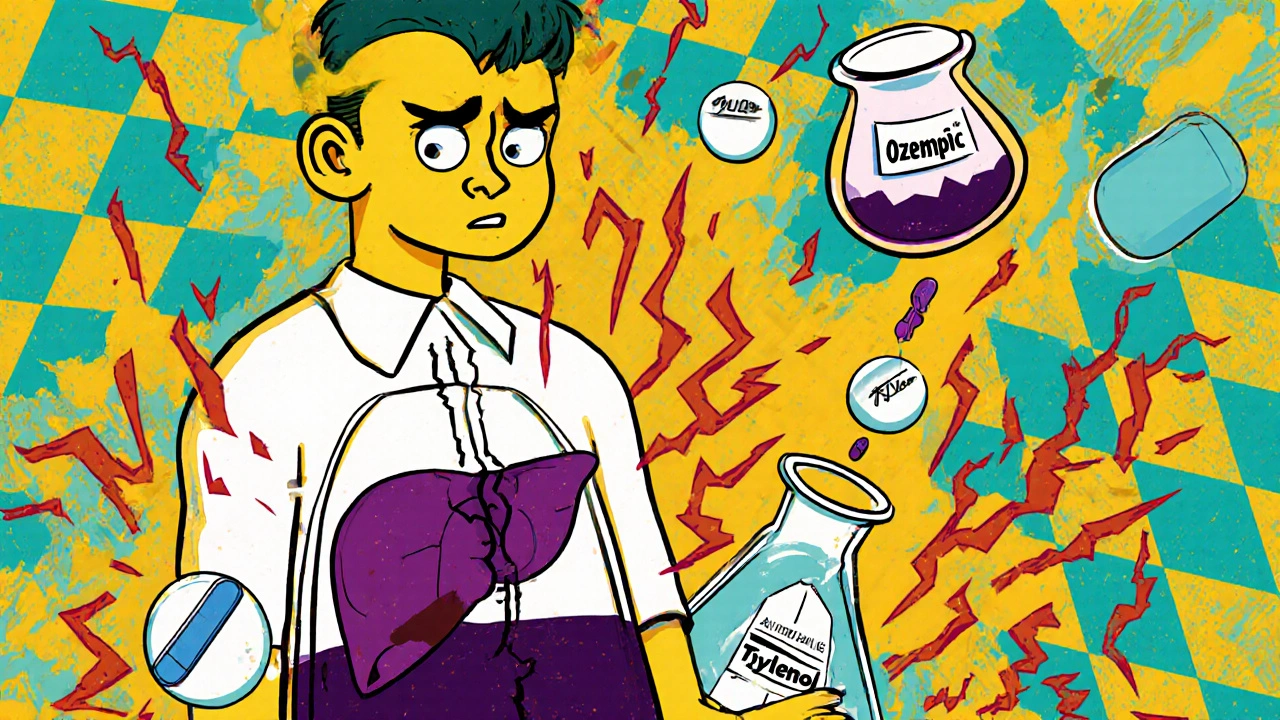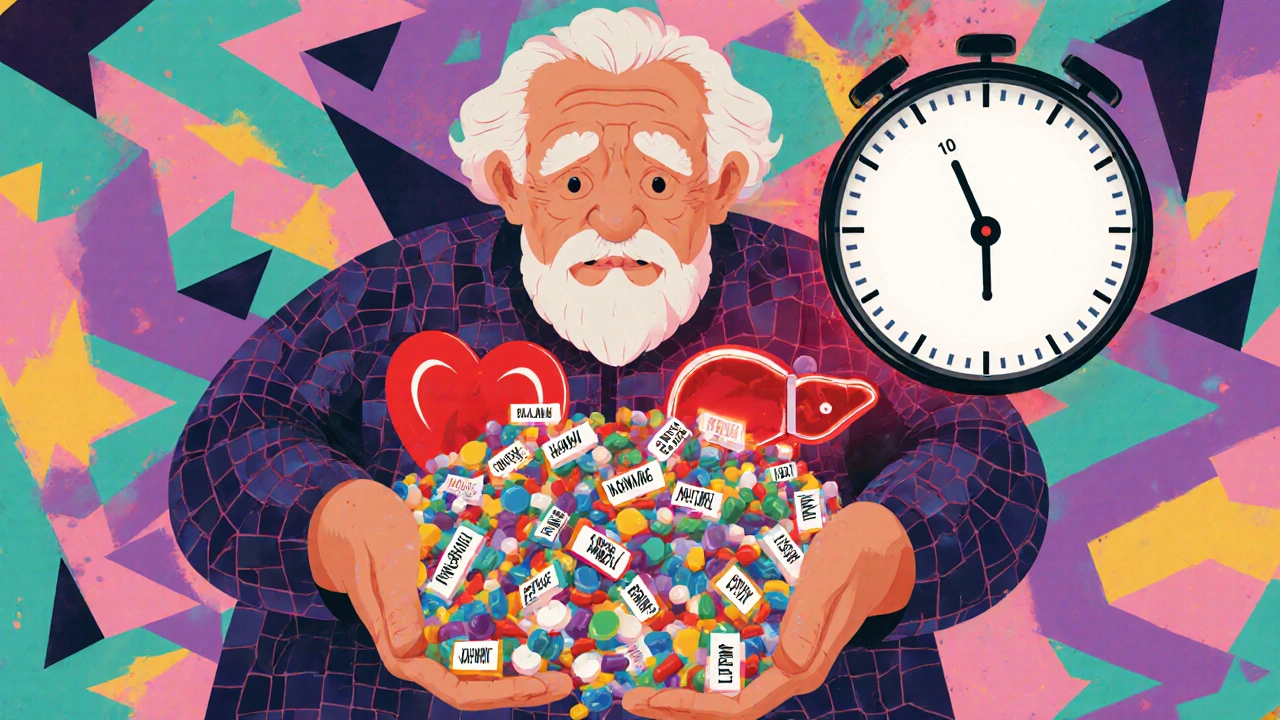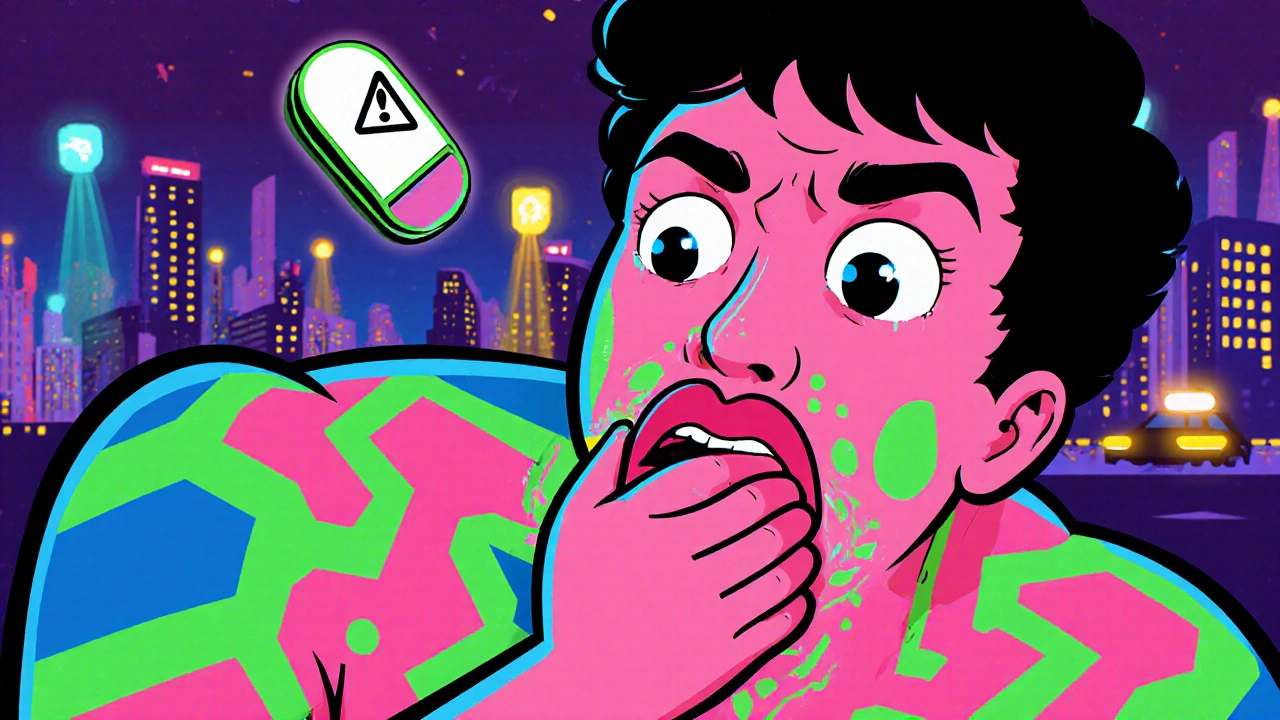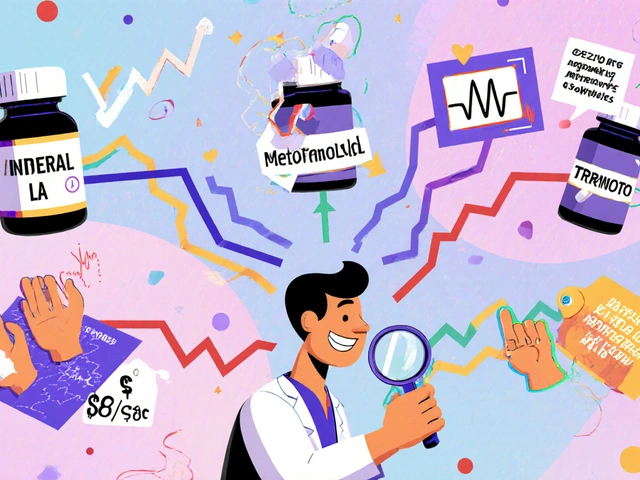Most people take medication without thinking twice. A pill for pain, a shot for blood pressure, a capsule for cholesterol - it’s routine. But what if that pill could quietly start something dangerous? Not the mild headache or dry mouth you read about in the leaflet. Something life-threatening. Something that creeps up fast, before you even realize you’re in trouble.
What Makes a Side Effect Dangerous?
Not all side effects are created equal. Some are annoying but harmless - drowsiness from an antihistamine, a little nausea after antibiotics. These happen in about 35% of users, according to the FDA. But dangerous side effects? Those are rare - affecting roughly 1 in 1,000 people on a medication. Yet they cause over 1.3 million emergency room visits each year in the U.S. alone. A dangerous side effect isn’t just uncomfortable. It’s a signal your body is under serious stress. It could mean your liver is shutting down, your heart is misfiring, your immune system is attacking itself, or your blood won’t clot. The FDA defines a serious reaction as one that leads to death, hospitalization, disability, or permanent damage. And the worst part? Many of these reactions start subtly. By the time you feel really sick, it might already be too late.The Red Flags: 7 Life-Threatening Symptoms to Never Ignore
Here’s what to watch for - not weeks later, but within hours or days of starting a new medication.- Difficulty breathing or swelling in your face, lips, or tongue - This isn’t just an allergy. It could be anaphylaxis, a full-body reaction that can kill in minutes. If you feel your throat closing, your tongue feels thick, or you can’t catch your breath after taking a pill, call 911. Don’t wait. Don’t text your doctor. Don’t hope it goes away.
- Chest pain or a heartbeat that races or skips - A heart rate over 100 beats per minute, especially if you’re not exercising, is a red flag. If you feel pressure in your chest, dizziness, or your heart feels like it’s fluttering out of control, get help. Medications like certain antibiotics, asthma inhalers, or even weight-loss drugs can trigger dangerous arrhythmias.
- Unusual bleeding or bruising - If you’re bleeding from your gums for no reason, have nosebleeds that won’t stop, or see purple spots on your skin (petechiae), your blood might not be clotting. This can happen with blood thinners, NSAIDs, or even some antibiotics. It’s not normal. Don’t brush it off.
- Seizures or convulsions - Any sudden loss of control, jerking movements, or staring spells after starting a new drug is a medical emergency. This can happen with antibiotics, antidepressants, or even over-the-counter cold medicines if you’re sensitive.
- Yellow skin or eyes, dark urine, or severe stomach pain - This trio is a classic sign of liver damage or pancreatitis. Medications like semaglutide (Ozempic), methotrexate, or even high-dose acetaminophen can cause this. Jaundice doesn’t come on slowly. If you notice it, go to the ER. Left untreated, this can be fatal within 48 hours.
- High fever, rash, and swollen lymph nodes - This isn’t just a rash. It could be DRESS syndrome - a rare but deadly reaction where your immune system goes haywire. It often starts with a skin rash but quickly leads to organ failure. If you’ve been on a new drug for more than a week and suddenly feel sick with a fever and swollen glands, don’t wait.
- Extreme drowsiness, confusion, or inability to wake up - If you’re sleeping more than the label says, can’t stay awake during the day, or feel like you’re in a fog, this could mean your central nervous system is being depressed. This is especially dangerous with opioids, benzodiazepines, or sleep aids. In older adults, this can look like "just getting older" - but it’s not.
Why Timing Matters: Hours vs. Days
The difference between a bad reaction and a deadly one often comes down to speed. Allergic reactions like hives or swelling usually happen within an hour. That’s why doctors tell you to wait 15-30 minutes after getting a shot - they’re watching for anaphylaxis. But some reactions, like DRESS or liver damage, take days or even weeks to show up. That’s why you can’t just stop checking after the first few days. Banner Health says if symptoms show up within 1-2 hours of taking a pill, treat it like an emergency. If they appear after 3-7 days, still call your doctor - but don’t wait until Monday if it’s Friday night. If you’re on a new medication and feel worse after each dose, that’s not normal. That’s your body screaming for help.
Who’s at Highest Risk?
You might think dangerous reactions happen to everyone equally. They don’t. Older adults - especially those over 65 - are 2.7 times more likely to have serious side effects. Why? Their bodies process drugs slower. Their kidneys and liver don’t work as well. And most of them are on five or more medications at once. That’s called polypharmacy. It increases the risk of dangerous interactions by 300%, according to the American Geriatrics Society. People with chronic conditions - like kidney disease, liver disease, or heart failure - are also at higher risk. Their bodies can’t clear drugs the way healthy ones do. Even a normal dose can become toxic. And then there’s the look-alike, sound-alike problem. Insulin and heparin look similar. Xanax and Zoloft sound alike. A mix-up can be deadly. The Institute for Safe Medication Practices says 12% of dangerous side effects come from these kinds of errors.What to Do When You Spot a Warning Sign
Don’t panic. But don’t wait.- If you have breathing trouble, swelling, chest pain, or loss of consciousness - call 911 immediately. Don’t drive yourself. Don’t wait for a ride. Emergency services can give you epinephrine on the spot - the only thing that can stop anaphylaxis.
- If you have yellow skin, severe pain, unusual bleeding, or seizures - go to the nearest emergency room. Bring your medication list. Write down exactly when you took your last pill and what symptoms started.
- If you have a rash, fever, or swollen glands - call your doctor within 24 hours. Don’t wait. Don’t try to treat it with antihistamines. This could be the start of something much worse.

How to Protect Yourself Before You Even Take a Pill
Prevention is better than emergency care.- Use the Brown Bag Method - Every few months, bring all your pills - prescriptions, over-the-counter drugs, vitamins, supplements - to your doctor or pharmacist. They can spot dangerous combinations you didn’t even know about.
- Know your drugs - Don’t just take what’s handed to you. Ask: "What are the real risks? What should I watch for?" If your doctor says "it’s rare," ask "how rare?" One in 100? One in 10,000? That changes how seriously you take it.
- Ask about genetic testing - New programs like the NIH’s Pharmacogenomics Research Network test your DNA to see how your body will react to certain drugs. For example, if you carry a specific gene variant, carbamazepine (a seizure drug) could cause a deadly skin reaction. Testing cuts that risk by nearly half.
- Use a pill organizer - Especially if you’re on multiple meds. It reduces mix-ups. And write down any new symptom in a notebook. That way, when you see your doctor, you can say: "Day 3, I got a rash on my chest. Day 5, I felt dizzy after lunch. Day 7, my pee turned dark." Details save lives.
What’s Changing in Medication Safety
The system is catching up. The FDA now requires real-time monitoring of high-risk drugs using electronic health records. That means if 20 people in a state all get liver damage from the same drug, the system flags it within weeks - not years. AI tools are being used to predict who’s at risk. Mayo Clinic’s new dashboard looks at your age, weight, kidney function, and other meds to give you a personalized danger score - 89% accurate, according to their study. And soon, smart packaging will alert you if you’re taking too much. Apple and the American Heart Association are testing watches that detect irregular heartbeats caused by medications. In the next few years, your phone might warn you before you even feel sick. But none of that matters if you don’t know what to look for.Final Thought: Your Body Knows Before You Do
Medications are powerful. They save lives. But they also carry risk. The key isn’t avoiding them - it’s staying alert. If something feels off after you start a new drug, trust that feeling. Don’t rationalize it. Don’t tell yourself it’s "just stress." Don’t wait until you’re in crisis to act. Write down the symptoms. Call your doctor. If it’s serious, go to the ER. You’re not overreacting. You’re being smart.Can I just stop taking my medication if I think it’s causing side effects?
No. Stopping certain medications suddenly can be dangerous. For example, quitting beta-blockers, antidepressants, or anti-seizure drugs without medical supervision can cause heart attacks, seizures, or severe withdrawal. Always talk to your doctor first. They may advise you to taper off slowly or switch to a safer option.
How long after taking a new drug do dangerous side effects usually appear?
It varies. Life-threatening allergic reactions like anaphylaxis often happen within minutes to an hour. Rashes or fever might take days or weeks. Liver damage or DRESS syndrome can appear 2-6 weeks after starting the drug. If you notice any new symptom after starting a new medication, even if it seems mild, monitor it closely and contact your doctor.
Are over-the-counter drugs safer than prescription ones?
Not necessarily. Many people assume OTC drugs are harmless, but they can cause serious side effects. High doses of acetaminophen (Tylenol) can cause liver failure. NSAIDs like ibuprofen can lead to stomach bleeding or kidney damage. Even herbal supplements like St. John’s Wort can interfere with heart medications or antidepressants. Always treat OTC drugs with the same caution as prescriptions.
What should I bring to the ER if I think I’m having a bad reaction?
Bring your medication list - all pills, vitamins, supplements, and even topical creams. Include names, dosages, and when you last took them. If possible, bring the original bottles. Also write down when symptoms started, how they’ve changed, and any other recent health changes. This helps doctors act faster and avoid dangerous drug interactions.
Can I get tested to see if I’m at risk for dangerous side effects before taking a drug?
Yes - for some drugs. Genetic testing is now available for medications like carbamazepine, clopidogrel, and certain antidepressants. If you have a specific gene variant, your body may process the drug dangerously. The NIH’s Pharmacogenomics Research Network is expanding access, and some hospitals now offer pre-prescription testing. Ask your doctor if testing is available for your medication.


